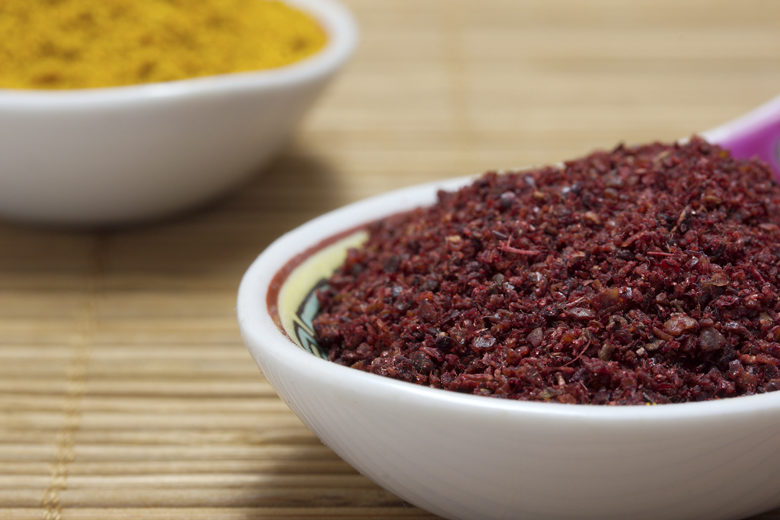
Herbs and spices lend a lot to a dish. Whether used fresh or dried, in the beginning of a recipe or just before serving, they add flavors, aromas and textures that can make a dish sing. There’s nothing wrong, exactly, with the old favorites — basil, oregano, black pepper, cumin — but read on for some new tasty and healthy ways to spice up your kitchen.
Sumac is a bright maroon-red berry (not the poisonous kind) ground and dried into a tart and earthy powder most often used in Middle Eastern and Mediterranean dishes. Use it alone, with or in place of lemon, in hummus and baba ghanouj; use it mixed with dried thyme and sesame seeds as the spice blend za’atar on flatbread or kebabs. Try it on cubed watermelon with feta cheese for a simple and delicious salad.
Grains of paradise are small seeds with a big history stretching all the way back to medieval times. Legend has it that spice traders increased the seeds' value by claiming they could only be grown in the Garden of Eden. Actually hailing from West Africa, the flavor leads with black pepper, rides along with cardamom, and finishes with a lemony tang. They are normally crushed for use in recipes featuring grilled meats and fish, but would also pair nicely with stone fruits such as peaches and cherries in a dessert. Keep a spare coffee grinder or pepper mill handy; you’ll want to use these in everything.
Curry leaves are not at all related to curry powder or the curry plant, nor are they interchangeable. This green leaf is most often sold fresh or frozen in specialty stores and brings a fresh, pungent taste to South Indian foods. They look a bit like bay leaves, but don’t spend time fishing them out of your bowl if one appears in your curry. Curry leaves are edible once removed from the main stem. Use them as an aromatic along with ginger and garlic when starting a dish or use them as a final burst of flavor just before serving. Traditionally eaten with vegetables or poultry, curry leaves can also show up in the lentil dish dal.
Fennel pollen is usually collected from the flowers of wild fennel planted on the roadsides and mountain tops of Italy. In this country it’s found in California, where a lot of Italian immigrants planted fennel in order to remind them of their homeland. If you are a fan of the sweet and spicy anise-with-a hint-of-citrus flavor, you will want to use this on everything from fish to pork to vegetables. It also plays well with grain dishes both sweet and savory, such as baked goods and whole grain pilafs. But note that fennel pollen is more of a flavor enhancer and really only needs the smallest pinch per person. Looking for a sodium-free alternative to finish a dish and to boost umami? Think fennel pollen.
Borage, also known as starflower, has an ethereal, herbal, almost cucumber flavor. The delicate blue flower is often found candied as a dessert garnish or frozen into ice cubes as a lovely addition to any beverage. The leaves are also edible, used in salads, tapenade and even green smoothies! The young leaves are best for raw use, while the more mature leaves are best lightly cooked as they can get a bit prickly. Borage is also a great companion plant in your herb garden. Not only does it attract bees, but it improves the yield of tomatoes, brassicas and strawberries due to the high calcium and potassium content of its stems and leaves.
